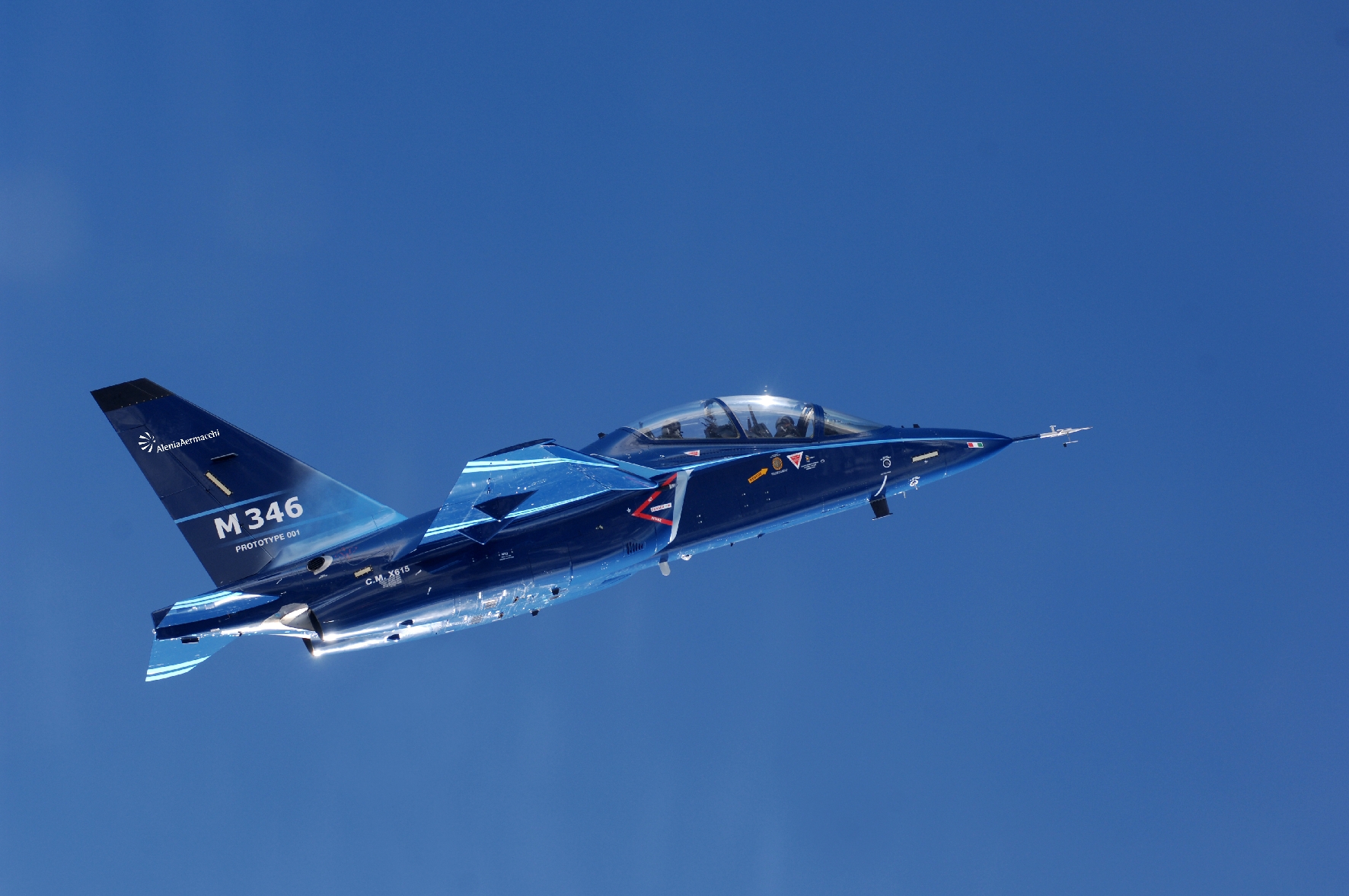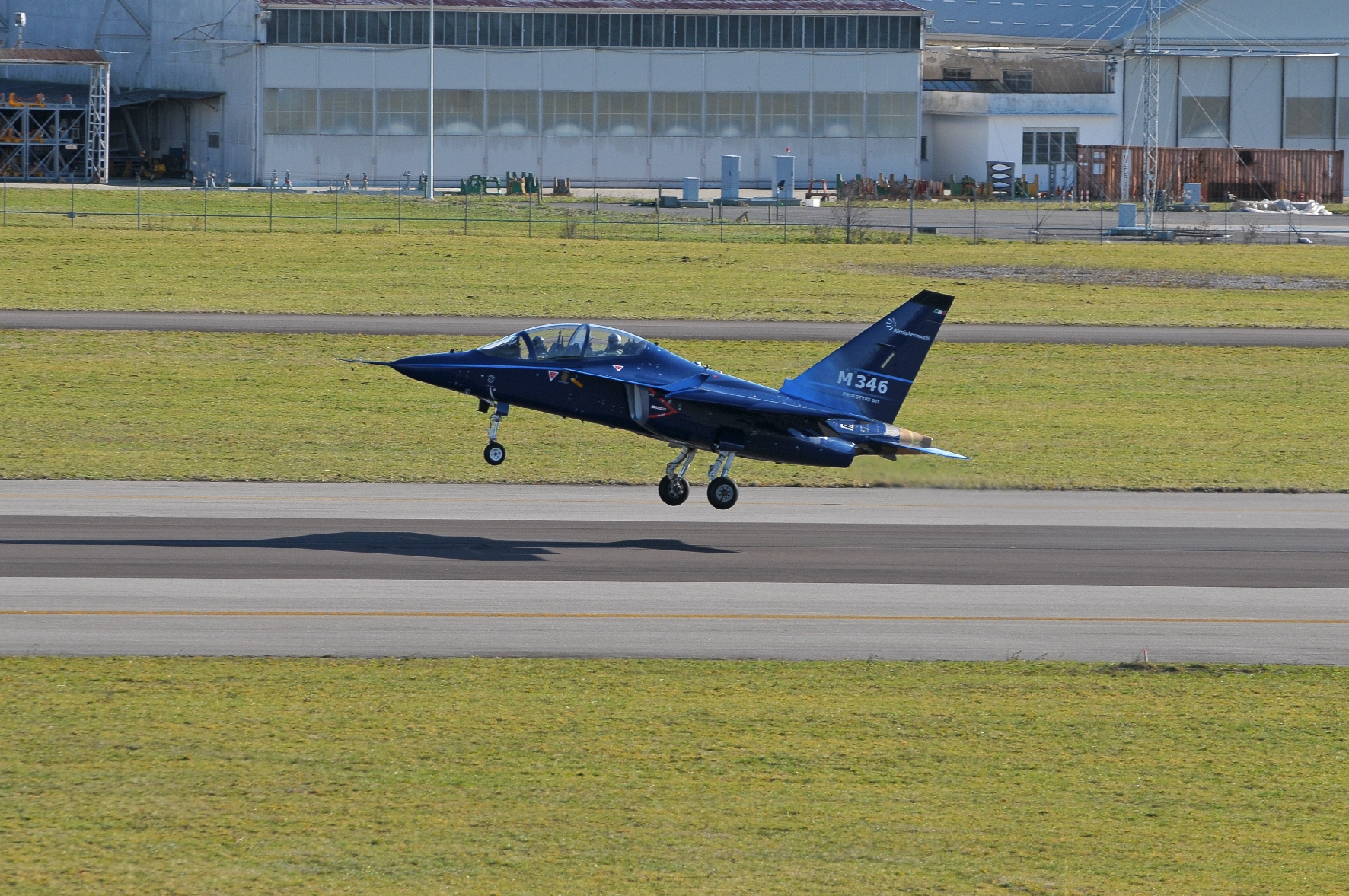ThalesRaytheonSystems Awarded $217 Million to Upgrade U.S. Army Firefinder Radar
December 23, 2008
Upgrade significantly reduces lifecycle cost, provides greater reliability and extends the life of the radar to 2030
This contract follows the
The Firefinder RMI program addresses needs specifically identified by the user and integrates new technology that protects the warfighter from today’s increasingly sophisticated threats. The program enhancements include a modular, aircooled transmitter and new common radar processors that will be applied to the Army’s entire fleet of AN/TPQ-37 Firefinder radar systems as well as to the fleet of agile AN/TPQ-36 Firefinder radars.
These upgrades will significantly reduce lifecycle costs and provide higher system availability, extending the expected life of the radar to year 2030. The RMI program could potentially save the U.S. Army more than
The AN/TPQ-37 is the world’s premier long-range weapon locating radar, deployed worldwide by the U.S. Army and 11 international customers. It locates the position of hostile artillery, rockets and mortars so friendly forces can quickly and accurately return
fire.
“This contract award underscores the Army’s confidence in the AN/TPQ-37 Firefinder and its value to Army warfighters,” said
ThalesRaytheonSystems will procure, build, integrate and test upgrade kits for the AN/TPQ-37 radar, which will then be delivered to and installed by the U.S. Army Depot at
About ThalesRaytheonSystems
ThalesRaytheonSystems is an equally owned transatlantic joint venture between Raytheon Company and Thales Group. ThalesRaytheonSystems is a worldwide supplier of air defense command and control systems, including sensors and ground-based battlefield radars. The company’s annual revenue is in excess of
Pratt & Whitney’s PW4000 Advantage70(TM) Earns FAA Certification
December 23, 2008
“We have met all FAA requirements for FAR33, the biggest hurdle to overcome in an engine development program,” said
The A330-200 and A330-300 passenger aircraft will be the first to fly the PW4000-100″ engines with Advantage70 in mid-2009.
Pratt & Whitney has over 16,000 aircraft engines installed with hundreds of airlines around the world. Pratt & Whitney is also a leading partner in two joint venture companies that manufacture commercial aircraft engines: International Aero Engines, which makes the V2500 for the Airbus A320 family of aircraft, and the Engine Alliance, whose GP7200 engine is in service on the Airbus A380.
Pratt & Whitney is a world leader in the design, manufacture and service of aircraft engines, space propulsion systems and industrial gas turbines. United Technologies, based in
FAA Approves Boeing 787 Dreamliner Maintenance Program
December 23, 2008
The scheduled maintenance program defines the maintenance tasks and intervals operators will use to maintain the 787 and is documented in the 787 Maintenance Review Board Report (MRBR). The report was accepted by the Maintenance Review Board, an FAA organization composed of specialists who review and accept maintenance requirements. This MRBR approval from the FAA is one of the many requirements needed for airplane certification.
“The MRBR approval is a result of the most comprehensive maintenance program development effort in the history of the industry,” said
“The 787 maintenance program is one important aspect that ensures the continued airworthiness of the 787 while reducing overall maintenance burden on the operator,” said
Lockheed Martin SBIRS Team Delivers Major Subsystems for Second GEO Satellite
December 23, 2008
Developed and tested at Lockheed Martin’s facilities in
The propulsion subsystem is essential for maneuvering the satellite during transfer orbit to its final location as well as conducting on-orbit repositioning maneuvers throughout its mission life. It was developed at Lockheed Martin’s Mississippi Space & Technology Center, an advanced propulsion, thermal, and metrology facility located at the John C. Stennis Space Center. The SBIRS propulsion subsystem design is based on Lockheed Martin’s flight-proven A2100 geosynchronous spacecraft series and consists of 18 reaction engine assemblies, a fuel tank, two oxidizer tanks, and a liquid apogee engine.
In
“The team has maintained excellent focus on meeting GEO-2 delivery commitments while achieving the significant GEO-1 environmental test milestones that lead to the critical launch of the first GEO satellite,” said
SBIRS is designed to provide early warning of missile launches, and simultaneously support other missions including missile defense, technical intelligence and battlespace characterization. Lt Col
The SBIRS team is led by the Space Based Infrared Systems Wing at the U.S. Air Force Space and Missile Systems Center,
As the SBIRS prime contractor, Lockheed Martin Space Systems Company provides program management, the GEO spacecraft bus, HEO and GEO payload pointing, and system engineering and integration. Lockheed Martin Information Systems & Global Services builds and maintains the SBIRS ground segment which has been operational since 2001. Northrop Grumman is the major subcontractor and provides the HEO and GEO payloads and participates in ground system development and systems engineering.
Lockheed Martin’s current SBIRS contract includes the two HEO payloads now on-orbit, two GEO satellites, as well as ground-based assets to receive and process the infrared data. The program is in the early stages of adding additional GEO spacecraft and HEO payloads to the planned constellation.
Headquartered in
Boeing to Lead Southwest Airlines 737 Flight Deck Modernization
December 23, 2008
Under this large-scale integration program, the 737-300 airplanes will be modified with new and enhanced avionics supplied by GE Aviation, Honeywell and Rockwell Collins. The Classic 737s will be equipped with GE’s large area displays which use the latest in LCD technology and more closely align the 737-300 and 737-700 flight decks, creating commonality, and allowing the 737-300 to operate in the same preferred airspace as the newer 737-700s.
The 737-300 enhancements will also position Southwest for additional features — currently under development — that will support future airspace requirements.
Southwest Airlines, an industry leader in airline efficiency, also is making a fleet-wide commitment to Required Navigation Performance (RNP) operations, a navigation technology that enables an aircraft to operate within a tight corridor of airspace with Global Positioning System guidance. These RNP enhancements will help the airline reduce fuel consumption, enhance safety and situational awareness, and minimize aircraft emissions and noise resulting in improved efficiency and reduced costs.
“Southwest is a great airline and partner and we’re proud to support in their initiatives toward more efficient operations,” said
“This upgrade program will enhance safety, situational awareness, and fuel efficiency, and it will allow greater training flexibility due to flight deck commonality,” said
As the original equipment manufacturer, Boeing is uniquely qualified to provide the lowest risk solution through its intellectual property, engineering and technical resources, world-class testing and certification capabilities and long term supplier relationships.
Coughlin Joins Pinnacle Airlines Corp. Board
December 23, 2008
MEMPHIS, TN–(Marketwire – December 22, 2008) – Pinnacle Airlines Corp. (
“Pinnacle has an intensive safety program and adding someone of Susan Coughlin’s stature, experience and integrity to our board helps position us to continue the industry-leading growth and performance Pinnacle is experiencing,” said Philip H. Trenary, President and Chief Executive Officer.
Ms. Coughlin has held executive positions in the transportation industry since 1981, most recently as President and CEO of the Aviation Safety Alliance. Prior to joining ASA, she served as President and COO of the American Transportation Research Institute and as Director and COO of the Air Transport Association Foundation.
About Pinnacle Airlines Corp.
Pinnacle Airlines Corp. (
Louis Gallois resigns from the Board of Dassault Aviation
December 22, 2008
Amsterdam, December 22, 2008 – Louis Gallois resigned as a Director of
Dassault Aviation on November 26, 2008 to avoid any conflict of interest
resulting from Dassault Aviation becoming an industrial shareholder in
Thales.
EADS has a 46.3% shareholding in Dassault Aviation
Texas Aviation Services Delivers High Profile EC-135
December 21, 2008
Fort Worth – December 18, 2008 Texas Aviation Services (TAS), an industry leader in helicopter and aircraft completions for over 37 years, recently delivered a high profile EC-135 to Air Methods, operator for Vanderbilt LifeFlight. Vanderbilt is the air medical transport service of Vanderbilt University Medical Center in Nashville, Tennessee. LifeFlight supports the Level 1 Trauma Center at Vanderbilt and requires high-end customizing in an EMS environment. This EC-135 is an addition to LifeFlight’s fleet and one of many aircraft painted by TAS for Air Methods. The use of Imron polyurethane paint provides a durable excellent exterior seal for any environmental condition. “We have a long history with Air Methods and look forward to a continued successful business relationship,” TAS President Michael Bashlor said.
About Texas Aviation Services
Texas Aviation Services, with 140,000 square feet of facilities at Meacham Field in Fort Worth, TX, is an independent helicopter technical services company with 37 years of successful history. TAS specializes in both civilian and military helicopter completions, retrofits, MRO, avionics systems integration, interiors, paint, component overhaul and engineering. Originally founded in 1971, TAS performs complex customizing projects on civilian Bell, Eurocopter, Agusta and other helicopter types, and extensive retrofits on military Blackhawks. The Meacham Airport operations are one of the largest of their type in the mid-South, with the capacity for scores of helicopter projects per year.
“MASTER” is the name chosen for the Aermacchi M-346 trainer
December 21, 2008
The Examination Committee of the competition to name the M-346 trainer selected the name “MASTER” for the new M-346 advanced trainer/Lead-In Fighter Trainer, entirely designed and built by Alenia Aermacchi, a Finmeccanica Company.
The announcement will be made today by Ing. Carmelo Cosentino, Chief Executive Officer of Alenia Aermacchi, in the occasion of the annual meeting of the Members of the AERMACCHI PILOT CLUB, at the Circolo Ufficiali based in Centocelle Airport (Rome).
The competition to name the M-346 was launched on 20 October 2008 and ended on 23 November, recording a large success. Over 4,000 entries were received from every corner of the world.
The Committee, comprising the top management of Finmeccanica, Alenia Aeronautica and Alenia Aermacchi, examined the many proposals received and unanimously selected the name “MASTER”. This international name is the succinct embodiment of what the M-346 represents: the ideal tool to train the future jet pilots of the latest generation and at the same time the maximum level of training that a student can attain.
The winners of the prizes have been chosen from the three most interesting motivations.
The first prize goes to Mauro Petrolati, from Fiumicino (Rome), who will experience the thrill of a flight in the new M-346 advanced trainer, followed by visits to the Alenia Aermacchi factory in Venegono Superiore and to the Italian Air Force Museum at Vigna di Valle Air Force Base, near Rome.
The second prize was awarded to James Szabadics. He wins a very long journey to Italy to visits the Alenia Aermacchi factory in Venegono Superiore and to the Italian Air Force Museum at Vigna di Valle Air Force Base, near Rome.
The third prize was awarded to Giovanni Covella, from Chiari (Brescia) who wins a visit to the Alenia Aermacchi factory in Venegono Superiore.
Alenia Aermacchi congratulates the winners and will be pleased to welcome them on-site at the company. We also hope that the chosen name “MASTER” will take the M-346 to new heights of success and recognition in international market.
The Aermacchi M-346 advanced trainer breaks the sound barrier.
December 21, 2008
After 50 years an all-Italian aircraft flies at Mach 1
The Alenia Aermacchi M-346 advanced trainer made its first supersonic flight, reaching yesterday Mach 1.15 in the “supersonic corridor” off the Italian Riviera coast.
The first prototype M-346 reached this important milestone during a 75 minute flight which began and ended on the company airfield at Venegono Superiore.
«Breaking the sound barrier shows the great growth potential of our M-346 – commented after the flight Quirino Bucci, Alenia Aermacchi Chief Test Pilot. – The flight went as planned. The aircraft showed excellent controllability as it exceeded the speed of sound and maintained its pleasant handling throughout the deceleration phase. All aircraft systems performed regularly throughout the acceleration and deceleration phases».
This significant achievement is further testimony to the high capabilities and performances of the Aermacchi M-346 platform, which integrates the power of its two Honeywell F124 engines with extremely effective aerodynamics and the new release of the digital Fly by Wire flight control software. This allowed the aircraft to reach and cross the sound barrier, achieving a top speed of 1,255 kmph and improving upon its own previous top speed of Mach 0.96, achieved in 2007. Test activities will continue until the top design speed of Mach 1.2 is reached.
This is the first time in 52 years than an aircraft designed and built entirely in Italy breaks the sound barrier. The first Italian aircraft to fly faster than sound was the Aerfer Sagittario II piloted by Lt Col Giovanni Franchini of the Italian Air Force’s Experimental Test Unit, which on 4 December 1956 achieved Mach 1.1 at the end of a long dive at Pratica di Mare.
Since then, all supersonic aircraft built in Italy have been either foreign designs under licence – such as the famed F-104 Starfighter – or international collaborative products – like the Tornado multirole aircraft or the Eurofighter Typhoon.
Background: the Aermacchi M-346
The M-346 is the only new generation advanced/lead-in fighter trainer currently under development in Europe. The aircraft is tailored to train pilots to fly future combat aircraft and will be used in every phase of advanced and pre-operational training, reducing the hours flown on more expensive aircraft. In order to optimise training effectiveness and operating costs, the M-346 embodies the latest concepts of “design-to-cost”, supportability and production optimisation, with a human-machine interface representative of new generation combat aircraft such as Eurofighter, Rafale, F-16 and F-35 Joint Strike Fighter.
The M-346 is engineered with innovative design solutions. Its full authority quadruplex Fly-by-Wire control system and optimised aerodynamic configuration allow it to remain fully controllable at angles of attack beyond 35 degrees. With this technological capability, Alenia Aermacchi confirms its ability as an independent designer and manufacturer of advanced aircraft with Fly by Wire controls. This, combined with the twin-engine configuration and thrust/weight ration close to 1, translates into safety levels unattainable by its competitors. The M-346 also integrates digital avionics with the ability to simulate sensors and threats in flight. These characteristics and its performance make the M-346 the world’s leading tactical pre-operational training aircraft.









